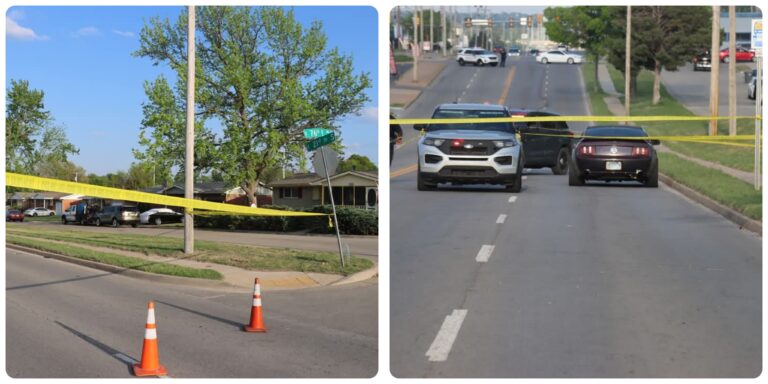
10/2/2021- 1:51 p.m.
Nearly 40 million people around the world are enslaved today, with the largest number living in India.
There, in the northern state of Uttar Pradesh, miners from the quarries fought against landowners who had enslaved their families for generations.
They freed themselves in July 2000 and started to exploit their own quarries.
It was this model of self-emancipation that motivated Laura T. Murphy to study contemporary forms of slavery.
A professor at the Helena Kennedy Center for International Justice at Sheffield Hallam University, in England, she tells the story of this modern-day slave revolt in the new book “Freedomville:
The Story of a 21st-Century Slave Revolt.” The conversation below has been shortened and slightly edited.Talk about being trapped in a cycle of lack of freedom, as you call it.
Sometimes powerless people are treated as inferior for so long that many do not think they have the same right to freedom or well-being as other people. Sometimes that inequality is anchored in law and culture, deepening that belief.
While they may dream of a different or better life, they struggle to imagine that it could ever be possible for them. Sometimes they even fear freedom – especially if there are no reliable or adequate support systems in place to protect them if they escape. In these cases, it can take a shock to the system to make people believe they can be free.
That is what happened in Sonbarsa, Uttar Pradesh, with the indigenous people of Kol.When do the Kols first crave freedom?
How did they begin to resist?
Grassroots organizers taught them about their rights, but that was not enough to convince them of their right to freedom.
The Kols had to see others win freedom.Miners in quarries had gone to the government to get leases for their own quarries. No one had stopped them; in fact, a few government agents helped them.
The self-liberated miners then sent their children to school.
They sold their own products.
They made their own money. It was their example, spread by whispers and gossip, that finally reached the Kol people of Sonbarsa.
Between 1998 and 2000 they started labor strikes and campaigned to elect one of them as village chief, many of them even successfully petitioning for leases for their own small quarries.
A large group of Kol people also revolted, overthrowing their slave owners and securing their own freedom. Some of them went to prison and the slave-owning families burned their village and harassed them.
Yet they were free and exploited their own quarries. It was a success story of a grassroots nonviolent revolution.
They even had a documentary made about them called ‘The Silent Revolution’.
What else did you find when you traveled to Sonbarsa?This was the extent of the story as I understood it until I went to visit a small village renamed Azad Nagar (Freedomville) that was built in the wake of the uprising. By then, more than 10 years later, people were telling a different story.
Their protest had not been a quiet revolution after all. They told me a murder story that had never been in the story before.
They had launched a violent revolution, and they were still living with the consequences – positive and negative – of that community’s decision to fight back with whatever weapons they could get their hands on.
Who cares that a cruel slave owner was murdered?
When oppressed people protest, we often hear politicians and pundits say, “There is no excuse for violence.” We have essentially fetishized nonviolent protest.But that just ignores the very rational reasons why violent protests happen.
Violent protest is so often a reaction to a long history of powerful people committing all kinds of extraordinary violence with impunity.
Sometimes they are slave owners, but sometimes they are authoritarian governments or police or other elites. Violence is usually the last option to secure rights that marginalized people turn to after trying all official avenues.
So the Kol people are now enjoying their freedom?
I’ll let people read the book to find out how the Kol people are doing, but it’s a complicated situation that involves a long and unpredictable legal battle with the murdered slave owner’s family, a somewhat more predictable denial of the side of the grassroots organizers, and a massive corporate co-optation of the quarries of both the Kol and the former slave owners.
The people are physically free, but they were right to worry about what exactly freedom would be for people who are so disconnected.
Who are the heroes?
Who are the villains? Or is that not so clear?I spoke with the people of the slave-owning families who had been in power for generations. Many of them regret the end of forced labor in their region.
They take a paternalistic view—much like slave owners did in the 19th-century United States—and suggest that everyone was better off enslaving the Kol people.
This is, of course, clearly untrue.But talking to people who are former slave owners reminds us that exploitation can’t just be assigned to the realm of some nebulous “evil” force.
When we think of those who would use slave labor as evil villains, the issue of forced labor in its abstraction makes it completely unmanageable and suggests that the problem is individual bad actors.Slave owners are just as much a part of a society assigned to them as the Kol.
Understanding the structural and cultural support for such a forced labor system and how those systems encourage and perpetuate exploitation at the local level is critical if we are to tackle it effectively.What are the lessons for enslaved people?
And for the rest of us?
For those enslaved, the story of the Kol people, while not quite as hopeful as it initially seemed, still proves that grassroots efforts to end entrenched exploitation can have a positive effect, if people are given the support they need, including a way to earn a reasonable income, a way to raise their children, the opportunity to participate in political life, the ability to freely choose their work , etc.
I hope people can see the parallels between the Kols’ response to generations of violence and other responses to oppression experienced by people in many parts of the world.
Their story certainly reminds me of the long history of the black struggle against slavery and violence in the United States.
What that should mean for many of us is that instead of dismissing violent protest as irrational, we should instead think, “How has the system failed to respond to this community’s struggle for rights, and what are we going to do to stop the violence against this community? community that brought us here in the first place?”





